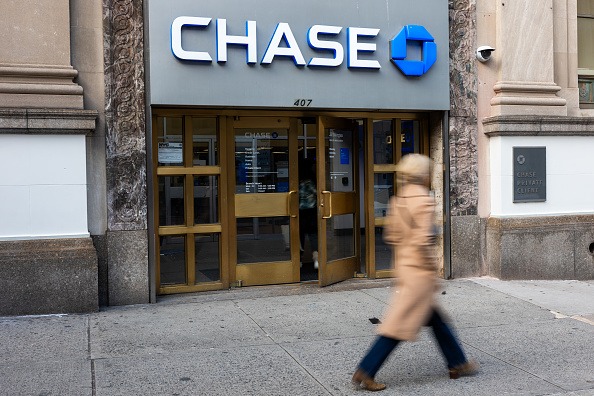Nasdaq’s “Death Cross” and the Biggest Movers of 2022
The major market indices have pulled back moderately during Q1 2022, but volatile trading conditions have catalyzed some big moves in the single-stock universe.

Volatility in the financial markets has been a key theme during the first quarter of the 2022 trading year.
Geopolitical concerns in Eastern Europe have catalyzed big swings in the major indices, while earnings-related surprises have contributed to jaw-dropping moves in the single-stock universe—especially in the technology sector.
For example, large-cap tech companies like Meta Platforms (FB), Netflix (NLFX), PayPal (PYPL) and Roku (ROKU) were all down more than 20% in the wake of earnings—outlier moves by any standard.
Recent performance in ROKU has been particularly calamitous, with the stock dropping 76% since July 19 of last year. The stock is down 50% year-to-date.
Beyond ROKU, there have been some other big losers in 2022, and many of them from the tech sector. Listed below are the top 15 losers in the stock market since the start of 2022 (of stocks with market capitalizations above $10 billion):
- Affirm Holdings (AFRM), -63%
- Shopify (SHOP), -52%
- Roblox (RBLX), -52%
- Roku (ROKU), -50%
- Carvana (CVNA), -46%
- PayPal (PYPL), -45%
- Sea Limited (SE), -43%
- Moderna (MRNA), -42%
- Etsy Inc (ETSY), -41%
- Twilio (TWLO), -40%
- Toast (TOST), -40%
- Block Inc (SQ), -39%
- Palantir Technologies (PLTR), -39%
- BioNTech (BNTX), -39%
- Meta Platforms (FB), -39%
In addition to the above, other notable losers from Q1 2022 include: Rivian (RIVN) -36%, Netflix (NFLX) -35%, Spotify (SPOT) -35%, Pinterest (PINS) -34%, Robinhood (HOOD) -35% and Coinbase (COIN) -25%.
These moves are especially surprising when one considers that the pullbacks in the major indices have been far less severe. So far in 2022, the S&P 500 is only down 9% and the Nasdaq 100 is down about 14%.
One would think that the divergence in indices and single stocks will be resolved soon, with the indices either correcting further or single stocks rebounding in the coming weeks.
The arrival of a so-called “death cross” pattern in the Nasdaq on Feb. 18 is a further indication that stocks may have reached an inflection point.
A death cross is defined as the point at which the 50-day moving average crosses below the 200-day moving average. Death cross patterns have at times preceded bear markets—in a stock, index, or any other asset that can be viewed on a price chart.
To learn more about moving averages, readers can review this recent installment of Market Measures on the tastytrade financial network.
Looking at the biggest winners so far in 2022, the list is dominated by stocks from the energy sector. Outperformance that is mainly attributable to a strong rally in the commodities market as products like crude oil, natural gas and uranium have seen demand return to pre-pandemic levels.
The top 15 winners so far in 2022 (with market capitalizations above $10 billion), include:
- Haliburton (HAL), +41%
- Occidental Petroleum (OXY), +36%
- Schlumberger (SLB), +34%
- Marathon Oil (MRO), +33%
- Alcoa Corp (AA), +31%
- Pioneer Natural Resources (PXD), +28%
- Discovery Inc (DISCA), +27%
- Hess Corp (HES), +27%
- Exxon Mobil (XOM), +26%
- CrediCorp (BAP), +26%
- EOG Resources (EOG), +26%
- Las Vegas Sands (LVS), +25%
- Devon Energy (DVN), +24%
- ConocoPhillips (COP), +24%
- Teck Resources (TECK), +23%
Of the 15 stocks listed above, only a handful don’t hail from the energy sector—AA, DISCA, BAP and LVS.
Depending on one’s market outlook and risk appetite, the aforementioned big moves in the stock market may be viewed as an opportunity, or as a reason for caution.
For more perspective on the current trading environment, readers are encouraged to review a new installment of This Week in Stocks on the tastytrade financial network.
To learn more about capitalizing on “fear” in the marketplace, this installment of Market Measures is also recommended.
To track everything moving in the financial markets, readers can also tune into TASTYTRADE LIVE—weekdays from 7 a.m. to 4 p.m. CST—at their convenience.
Sage Anderson is a pseudonym. He’s an experienced trader of equity derivatives and has managed volatility-based portfolios as a former prop trading firm employee. He’s not an employee of Luckbox, tastytrade or any affiliated companies. Readers can direct questions about this blog or other trading-related subjects, to support@luckboxmagazine.com.




















